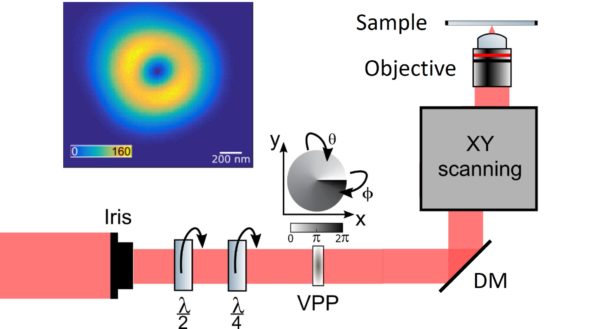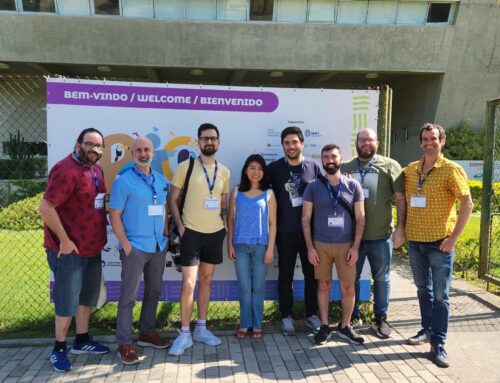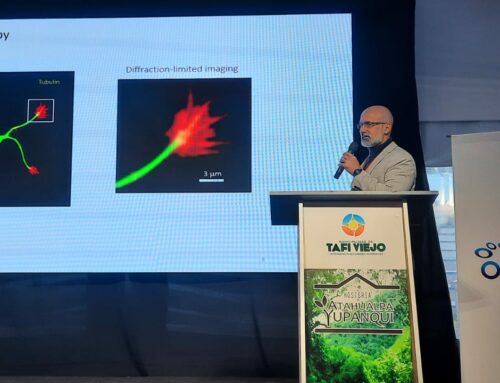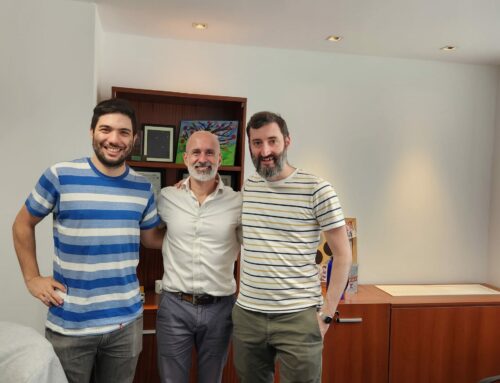Several super-resolution methods make use of toroidal foci, i.e. light foci with a central minimum, ideally a zero, of intensity.
For example, STED microscopy uses toroidal foci to suppress fluorescence emission in the periphery of the excitation focus through stimulated emission. Also, interrogating molecular position using a minimum of intensity is the basis for the most efficient methods for single molecule localization. This is the case of MINFLUX, or the more recent raster scanning a minimum of light RASTMIN.
To obtain a toroidal focus, the phase of the excitation beam needs to be modulated. In this new paper, we provide a tutorial explaining the fundamentals and experimental tricks to generate and optimize toroidal foci, particularly in raster-scanning microscopes.

Read the article:
Lucía F. Lopez, Luciano A. Masullo, Alan M. Szalai, Florencia Edorna, Florencia D. Choque, Fernando Caprile, Fernando D. Stefani
“Optimization and characterization of toroidal foci for super-resolution fluorescence microscopy: a tutorial”
Journal of the Optical Society of America B 40 (2023) c103-c110



